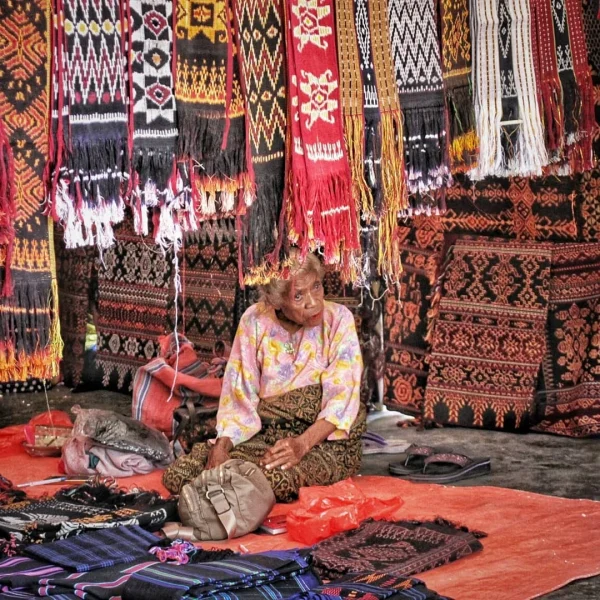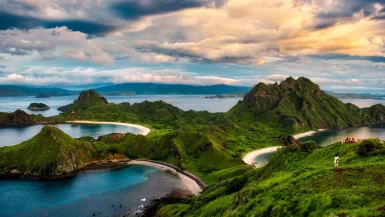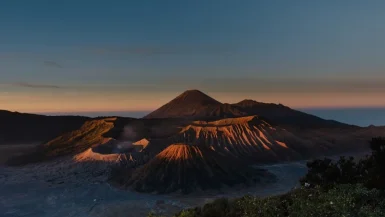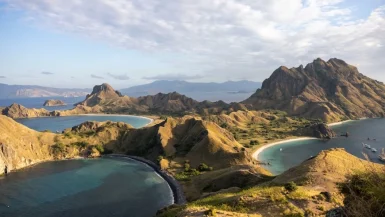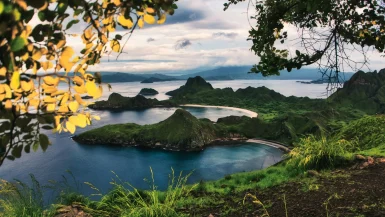Did you know that Indonesia has multiple traditional fabrics that are popular worldwide? You can find batik in Java, songket in Sumatera, Papuan woven fabric in Papua, and bentenan in Sulawesi. East Nusa Tenggara also has popular fabrics, one of them is ikat weaving Alor Island.
People said that ikat weaving from Alor Island is a timeless art of Eastern Indonesia. The motifs and patterns have a strong ethnic vibe. The fabric looks stunning with a colorful and eye-catching design. So, it’s one of the must-have items you must buy while visiting the island.
Find out more about the origin and history of the fabric, its cultural significance, how to make it, the meaning of the pattern and motif, and tips to buy to avoid scams here!
The Origins of Ikat Weaving in Alor Island
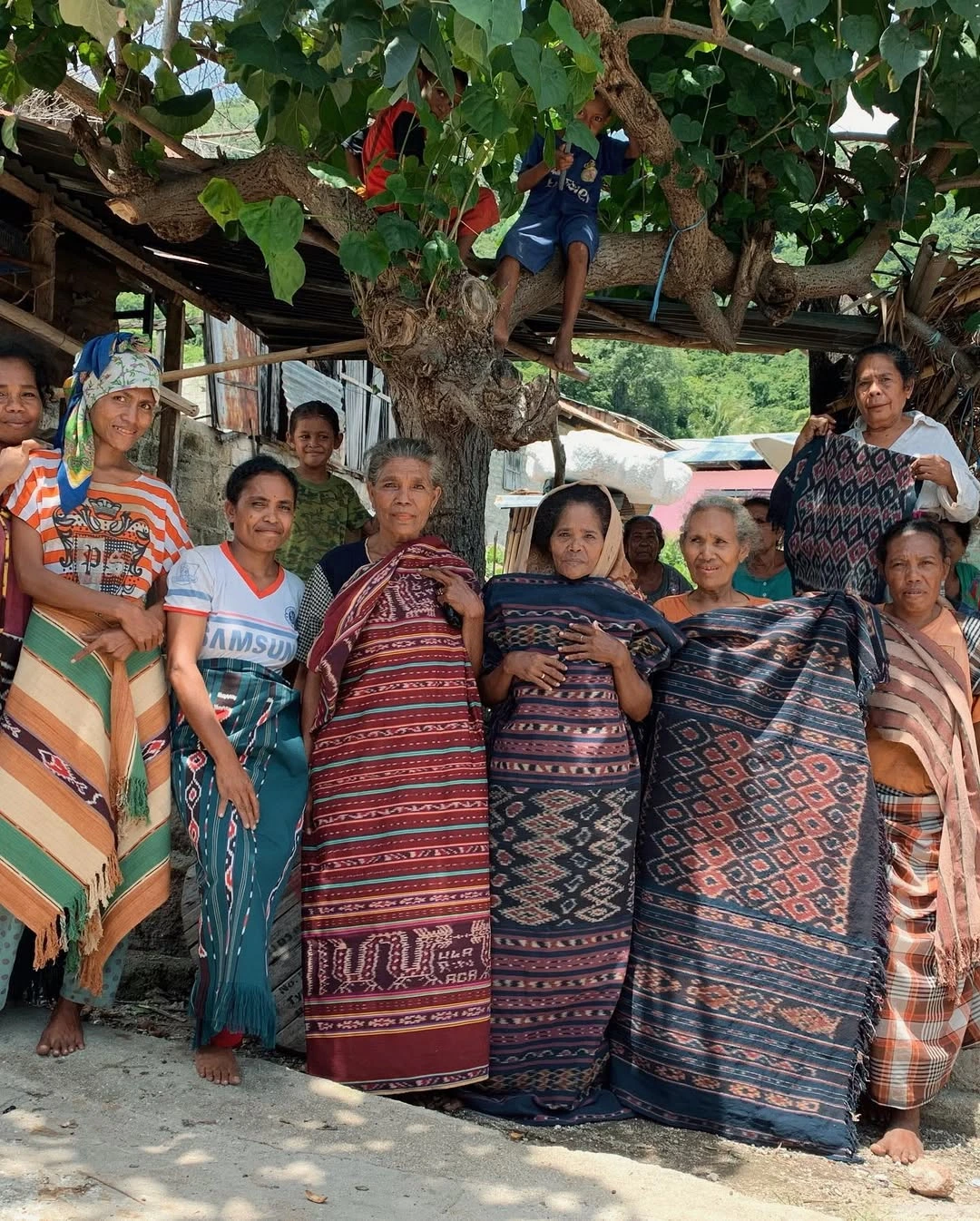
Ikat weaving has been an inherent part of the culture and tradition of Alor Island. According to the local community, the culture has existed since 3,500 years ago. To be precise, society started switching from animal skins to bark as clothing.
At first, the people of Alor Island only made ikat weavings for everyday wear. However, as time passed, this fabric became a symbol of their identity. They wore it during important events, such as weddings, rituals, and traditional ceremonies.
Alor Island is definitely not the only region in East Nusa Tenggara that produces ikat weavings. There are multiple East Nusa Tenggara ikat weavings that you can find throughout the province.
Several other provinces, such as West Nusa Tenggara and Maluku, have their own distinctive ikat weaving. However, there are characteristics of ikat weaving Alor Island that you can’t find anywhere else.
The one that makes it special is probably its color. Ikat weaving is colorful, even though the locals use natural dyes. They have found more than 100 natural dyes, all from nature.
The Intricate Process of Ikat Weaving
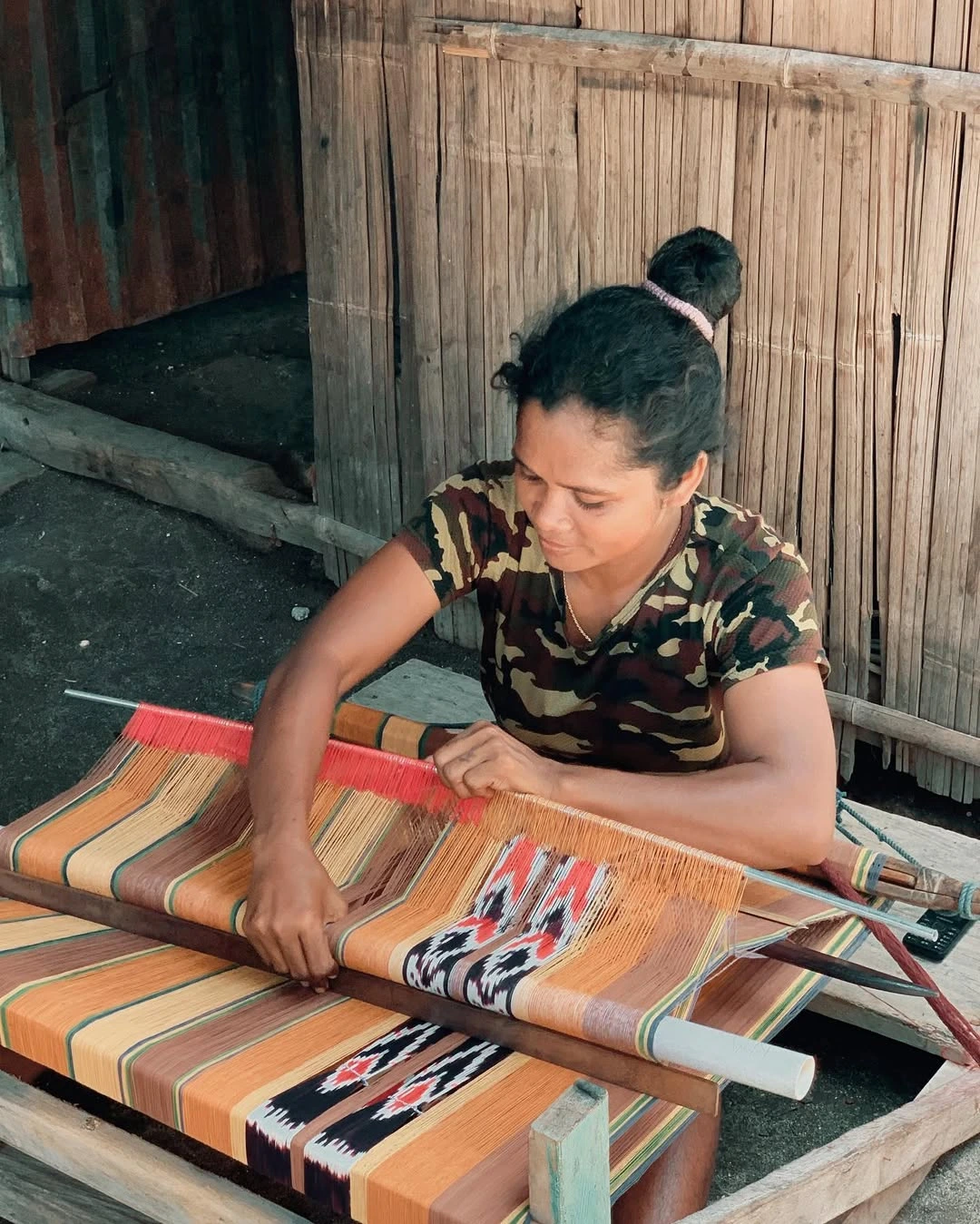
There are multiple steps to make ikat weaving Alor Island. Here’s how to make ikat weaving Alor Island!
1. Preparing the Materials
The first step is to prepare the material. You will need at least two things: natural yarn and natural dyes.
Locals usually prefer to use natural ingredients rather than industrial materials. The reason is that it’s more environmentally friendly, has better quality, and the fabric will be more durable.
2. Dyeing the Threads
After collecting all the materials, the next step is to make a thread. The locals use “ikat-mengikat,” or tie-binding, which is why the fabric is called “ikat weaving.”
The next step after making a thread is dying it. The weavers tie-binding it first before coloring it to make patterns. Usually, they use typical traditional colors like indigo blue, red, and brown. There are also more colorful colors like yellow, light blue, green, etc.
3. Weaving the Patterns
Once the dyeing process is completed and the fabric has dried, it’s time to weave the pattern. The people of Alor Island still make them manually using a backstrap loom, so it takes extraordinary patience and precision.
Usually, it takes an average of three months for one person to complete one fabric, which is why the price is kind of expensive. But it’s definitely worth it because each piece is manufactured individually, so it will feel special.
The Unique Patterns and Their Meanings
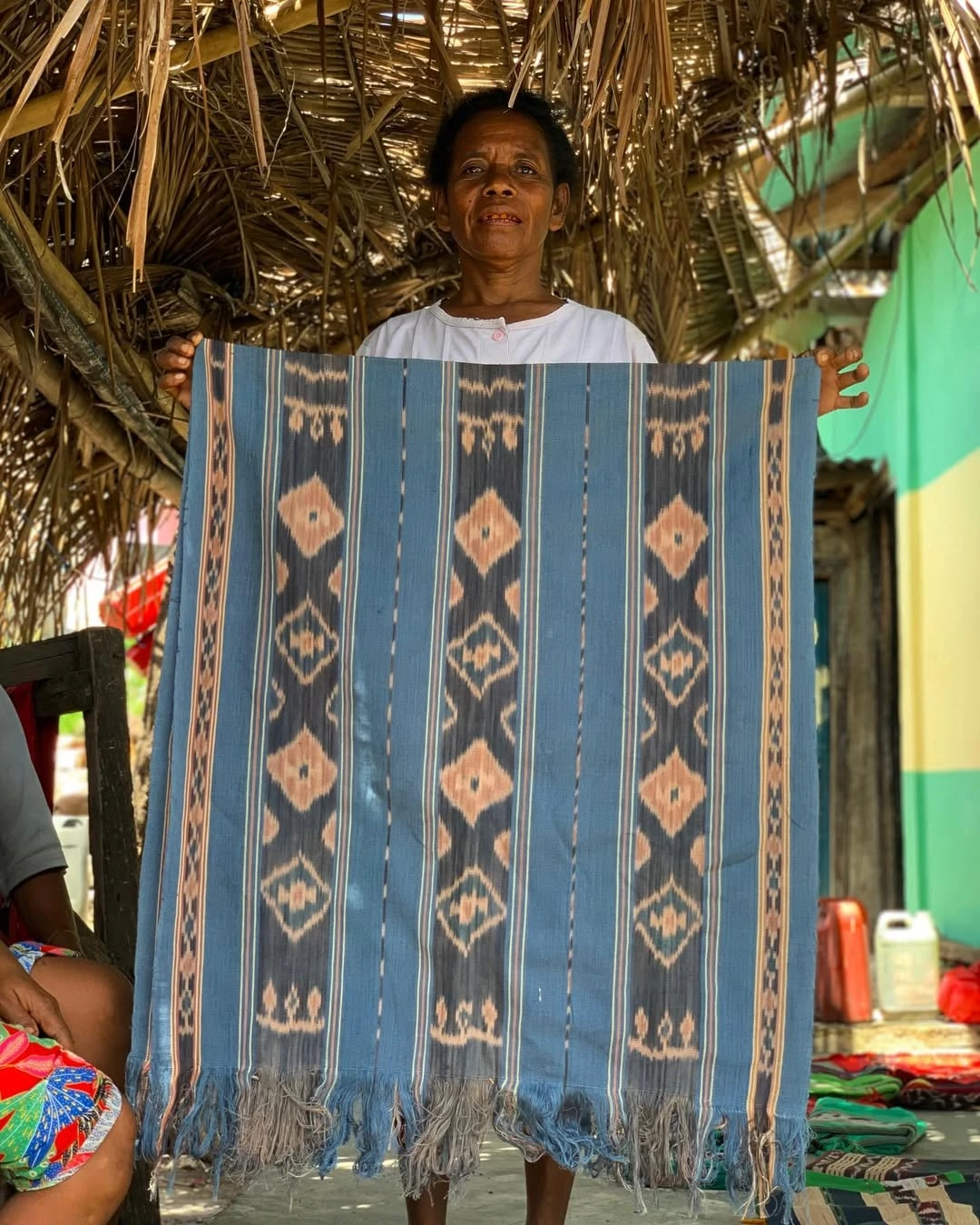
You will see multiple motifs and patterns in the ikat weaving. The most common one is kenari (walnuts) because Alor Island is known as “Kenari Island”. There’s also a pattern of sea creatures because the people of Alor Island are coastal communities that coexist with the sea.
Each village has a unique pattern because of its history, myths, and culture. Given that patterns emerge from these three factors, it is not surprising that there are pretty significant differences.
Where to Experience Ikat Weaving in Alor

1. Visiting Traditional Villages
The first is to visit traditional villages. Multiple villages, such as Takpala and Mombang Village, regularly produce ikat weaving. You can witness the process of making ikat and buy it directly from the weavers in those villages.
2. Participating in Weaving Workshops
If you can’t be satisfied with watching the making process, you can participate in making the ikat weaving by yourself. There’s usually some weaving workshop that you can join. You can learn straight from the local weavers.
Supporting Local Weavers
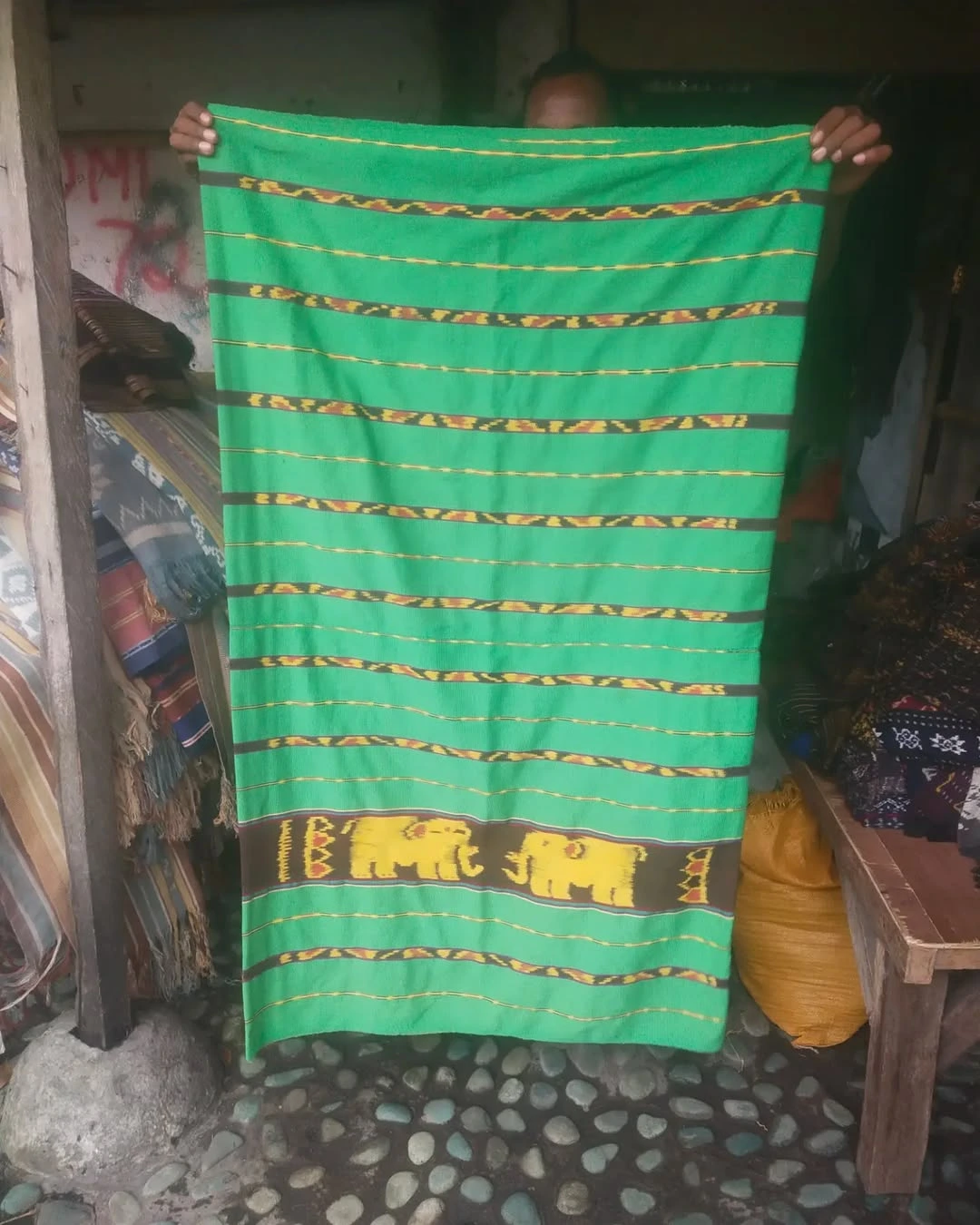
Make sure to support the local weavers in continuing this tradition and not facing extinction. This can also help the local community’s economy so that they can live a more decent and prosperous life.
The easiest way is to buy the original products. You can buy it straight from the local weavers to ensure its authenticity.
Tips for Buying Authentic Ikat Weaving
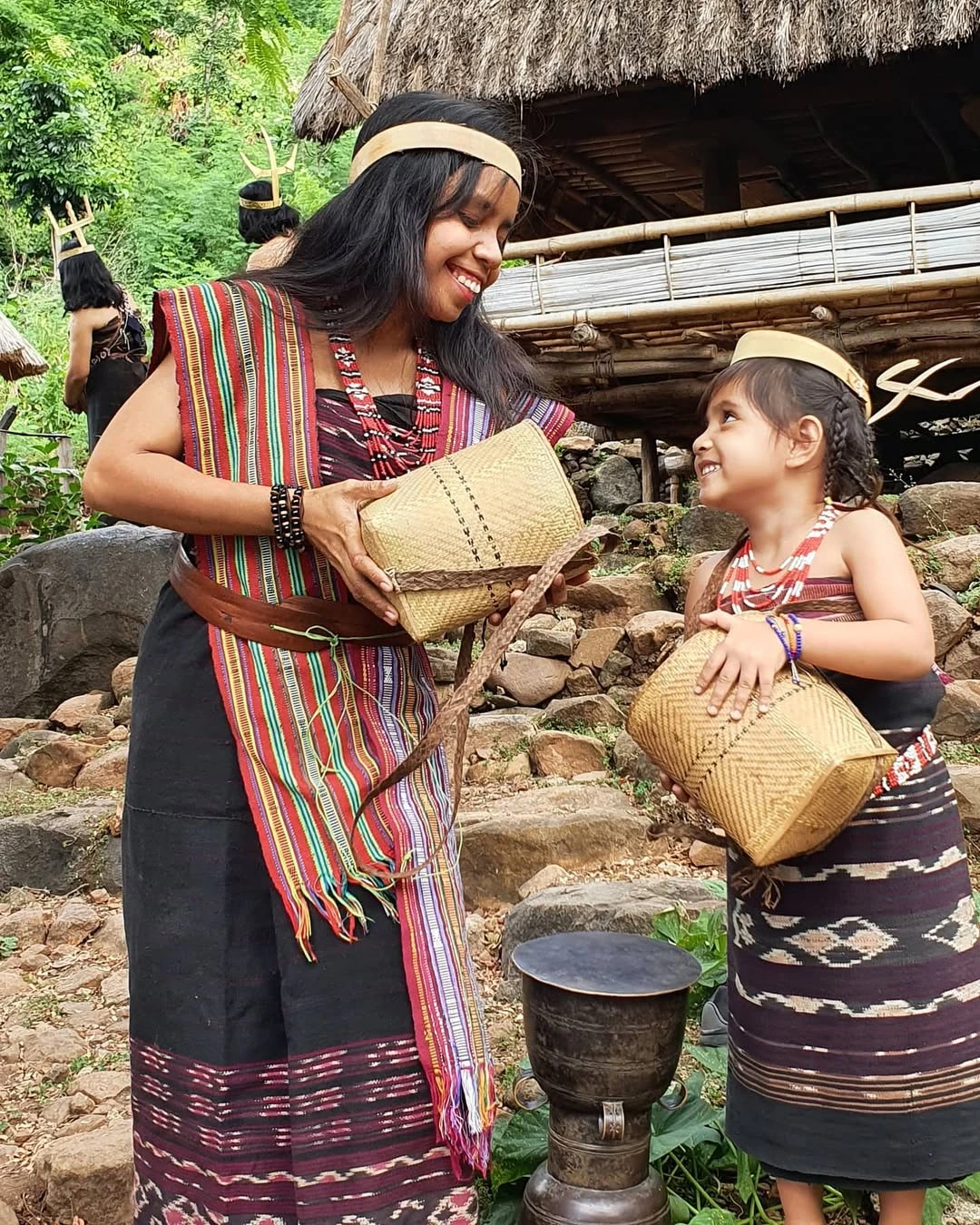
It’s usually easy to distinguish between a fake and an original. So, here are some tips for you!
- Look at both sides of the fabric, if the color looks the same then it’s original.
- Spread the fabric under the sun, if the thread looks tight and firm, then it’s original.
- The original ikat weaving Alor Island has a consistent pattern and texture.
- The price is reasonable. Usually, the price of ikat weaving Alor Island is around IDR 1 million-IDR 1,5 million per piece (USD 61,75-USD 92,68).
FAQs

To avoid confusion, here are some frequently asked questions for you!
The colorful colors and unique patterns. It’s also made from natural materials and natural dyes.
Yes, you can make it yourself by joining a workshop.
Yes, you can.
So, have you considered buying ikat weaving Alor Island during your trip? This fabric is perfect as a souvenir for yourself or other people. That’s why aside from visiting Wae Rebo Village to see Mbaru Niang, you can also visit multiple traditional villages in the Alors Islands to buy ikat weaving.

